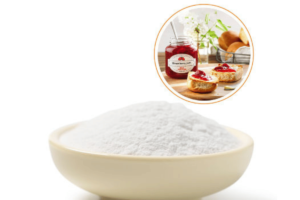Carboxymethyl cellulose (CMC) is a substance whose classification as natural or synthetic isn’t straightforward but rather lies in a gray area due to the nature of its production and origin. To understand this, we need to delve into its composition, production process, and the definitions of ‘natural’ and ‘synthetic’ in the context of chemical compounds.
CMC is a derivative of cellulose, which is undeniably a natural polymer. Cellulose is the most abundant organic compound on earth, primarily found in the cell walls of plants. It’s composed of glucose units linked by β-1,4-glycosidic bonds. The journey from cellulose to CMC involves significant chemical modification, primarily through a process known as etherification. This process introduces carboxymethyl groups (-CH2-COOH) into the cellulose chain, replacing some of the hydroxyl groups (-OH) present in the glucose units.
The key to the natural versus synthetic debate lies in this modification process. On one hand, the base material (cellulose) is entirely natural. However, the transformation into CMC involves synthetic processes. Chemicals like chloroacetic acid are used in this transformation, which is not a naturally occurring process. Therefore, while CMC originates from a natural source, its final form is the result of human-mediated chemical synthesis.
From a purist standpoint, any substance that undergoes chemical changes through human intervention might be considered synthetic. In this view, even though CMC is derived from a natural substance, the alteration it undergoes categorizes it as synthetic. However, from a more practical perspective, some might argue that since CMC is derived from a natural source, it retains some degree of its ‘natural’ identity.
In the context of industrial and consumer applications, CMC is often regarded as a synthetic additive, particularly in food, pharmaceuticals, and cosmetic industries. Its properties, such as high viscosity, non-toxicity, and ability to act as a thickening or stabilizing agent, are significantly different from those of unmodified cellulose, emphasizing its synthetic characteristics.
This duality is not unique to CMC but is common in many materials and compounds used in various industries. The distinction between natural and synthetic is not always clear-cut and often depends on the perspective and criteria used for classification. For regulatory and labeling purposes, especially in food and consumer products, these definitions can have significant implications.
In summary, carboxymethyl cellulose, while derived from the natural polymer cellulose, undergoes substantial chemical modification, which places it in the realm of synthetic substances. The degree to which one considers it natural or synthetic can depend on the context in which this classification is being considered, whether it be chemical, industrial, regulatory, or consumer-focused.





